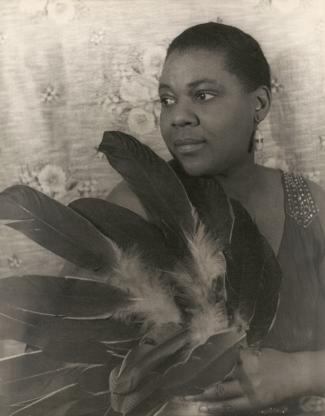It wouldn’t be National Women’s History Month without a nod to some of the amazing women who have helped shape the Chattanooga story in the past century and beyond. Many of those women are recognized by local landmarks around the city. We’ll give you a quick teaser below and suggest ways you can learn more about these amazing Chattanooga women.
What other women made history in Chattanooga? Let us know in the comments.
Dr. Mary Edwards Walker
 Mary Walker was feisty … to say the least. She was a surgeon, an alleged spy, an abolitionist, a feminist and the only woman ever to be awarded the Medal of Honor. Originally from Oswego, New York, her ties to Chattanooga are linked to the Battles of Chattanooga during the Civil War. As a surgeon, she was known for her stylish top hat that she wore onto battlefields that helped distinguish her as an unbiased surgeon instead of a member of the Union or Confederate regimes. Like everything in her life, Walker had to work hard to overcome adversity. Even her Medal of Honor was controversial. In 1917, President Woodrow Wilson rescinded her award due to her having never actually served in the military. But Jimmy Carter reinstated Walker’s honor in 1977.
Mary Walker was feisty … to say the least. She was a surgeon, an alleged spy, an abolitionist, a feminist and the only woman ever to be awarded the Medal of Honor. Originally from Oswego, New York, her ties to Chattanooga are linked to the Battles of Chattanooga during the Civil War. As a surgeon, she was known for her stylish top hat that she wore onto battlefields that helped distinguish her as an unbiased surgeon instead of a member of the Union or Confederate regimes. Like everything in her life, Walker had to work hard to overcome adversity. Even her Medal of Honor was controversial. In 1917, President Woodrow Wilson rescinded her award due to her having never actually served in the military. But Jimmy Carter reinstated Walker’s honor in 1977.
Walker’s story has so many more layers to uncover. You can see a full exhibit on her courage and bravery at the National Medal of Honor Heritage Center.
Mary Hardway Walker
In 1917, another Mary Walker moved to Chattanooga with her family. She was 69 years old at the time and when many would be winding down, she was just getting started. Mary Hardway Walker was born into slavery in 1848 and was not freed until she was fifteen. She worked multiple jobs — babysitter, cleaner, housekeeper etc. — to make ends meet. In 1963 (you’re reading that right), at the age of 115, Walker enrolled in the Chattanooga Area Literacy Movement where she spent two nights a week learning to read, write, along with simple addition and subtraction. Although, she died in 1969, her story has been held up as an example of how anything is possible if you follow your dreams. Age truly is just a number.
Walker’s legacy in Chattanooga is strong. Her name is given to a local retirement home where she lived her last years at 2501 Market St. Her life is chronicled in a 2017 children’s book called “The Oldest Student: How Mary Walker Learned to Read” by Rita Lorraine Hubbard.
Ruth Holmberg
 Ruth Sulzberger Holmberg was born on March 12, 1921, in New York City, though called Chattanooga home from 1946 until her death in 2017.
Ruth Sulzberger Holmberg was born on March 12, 1921, in New York City, though called Chattanooga home from 1946 until her death in 2017.
Holmberg served as publisher of The Chattanooga Times, the paper her grandfather owned along with The New York Times, from 1964 until 1992. During her time as publisher, she fought for civil rights, the integration of schools, and environmental issues. Her impact in Chattanooga is felt to this day due to her philanthropy, particularly in the arts and education sectors.
The Holmberg Bridge that connects First Street with the Bluff View Arts District is named after Ruth and that shiny gold dome you see in the Chattanooga skyline (find it at 735 Georgia Avenue) was once the headquarters of the Chattanooga Times—the newspaper Ruth Holmberg’s family-owned and that she was publisher of for many years. Mizpah Congregation’s synagogue on McCallie avenue was given to the community by Ruth’s grandfather, Adolf Ochs.
Ruby Lambert
 Ruby Lambert. Bet you can’t guess what Chattanooga attraction was named in her honor. Ruby Falls … the answer is obviously Ruby Falls. As teenagers, Leo Lambert and Ruby fell in love in Indiana. It really is a love story for the ages as Leo followed Ruby to Chattanooga to pursue her heart. Most wedding gifts include rings, bracelets or maybe a sentimental token from the past, but Leo Lambert’s love for Ruby went deeper. Quite literally.
Ruby Lambert. Bet you can’t guess what Chattanooga attraction was named in her honor. Ruby Falls … the answer is obviously Ruby Falls. As teenagers, Leo Lambert and Ruby fell in love in Indiana. It really is a love story for the ages as Leo followed Ruby to Chattanooga to pursue her heart. Most wedding gifts include rings, bracelets or maybe a sentimental token from the past, but Leo Lambert’s love for Ruby went deeper. Quite literally.
In the 1920s Chattanooga was making a name for itself in the Railroad industry which led to what is now known as Ruby Falls being closed off to the outside world due to new tracks being laid. A mining company from Birmingham, Alabama and Leo Lambert drilled from the top of Lookout Mountain to the bottom to create an elevator shaft. By accident, they discovered a second cave that provided unknown wonders like they had never seen. Note that it took them an entire day to drive through 5 feet of solid limestone and that they found the only crack in the whole thing leading to Ruby Falls. If they had drilled any other direction, they would have missed it. Talk about fate.
Now home to the tallest and deepest underground waterfall open to the public, Ruby Falls really is the (wedding) gift that keeps on giving.
Bessie Smith
 No woman is more synonymous with Chattanooga than the “Empress of the Blues,” Bessie Smith. Born in Chattanooga in 1892, Smith was easily one of the most famous residents of the Big 9/MLK area. Long before she was a household name for her hit “Downhearted Blues,” Smith performed on the streets (busking) of Chattanooga with her brother, Andrew. She would sing and dance while he played guitar. Her career blossomed in 1923 when she began recording songs in Philadelphia, which is where she met her husband Jack Gee. She would go on to become the highest-paid black entertainer of her time.
No woman is more synonymous with Chattanooga than the “Empress of the Blues,” Bessie Smith. Born in Chattanooga in 1892, Smith was easily one of the most famous residents of the Big 9/MLK area. Long before she was a household name for her hit “Downhearted Blues,” Smith performed on the streets (busking) of Chattanooga with her brother, Andrew. She would sing and dance while he played guitar. Her career blossomed in 1923 when she began recording songs in Philadelphia, which is where she met her husband Jack Gee. She would go on to become the highest-paid black entertainer of her time.
You can learn more about Bessie Smith at the center/museum that bears her name. The Bessie Smith Cultural Center features exhibits and information that help preserve and celebrate African American History and Culture in Chattanooga.
Chattanooga is oozing with history, but isn’t it cool that some of the most iconic spots in Chattanooga hail from women? Check out our other blog celebrating National Women’s History Month that highlights Women-Owned Businesses to Support in Chattanooga!
This is an updated version of a blog that was published previously on our site.





